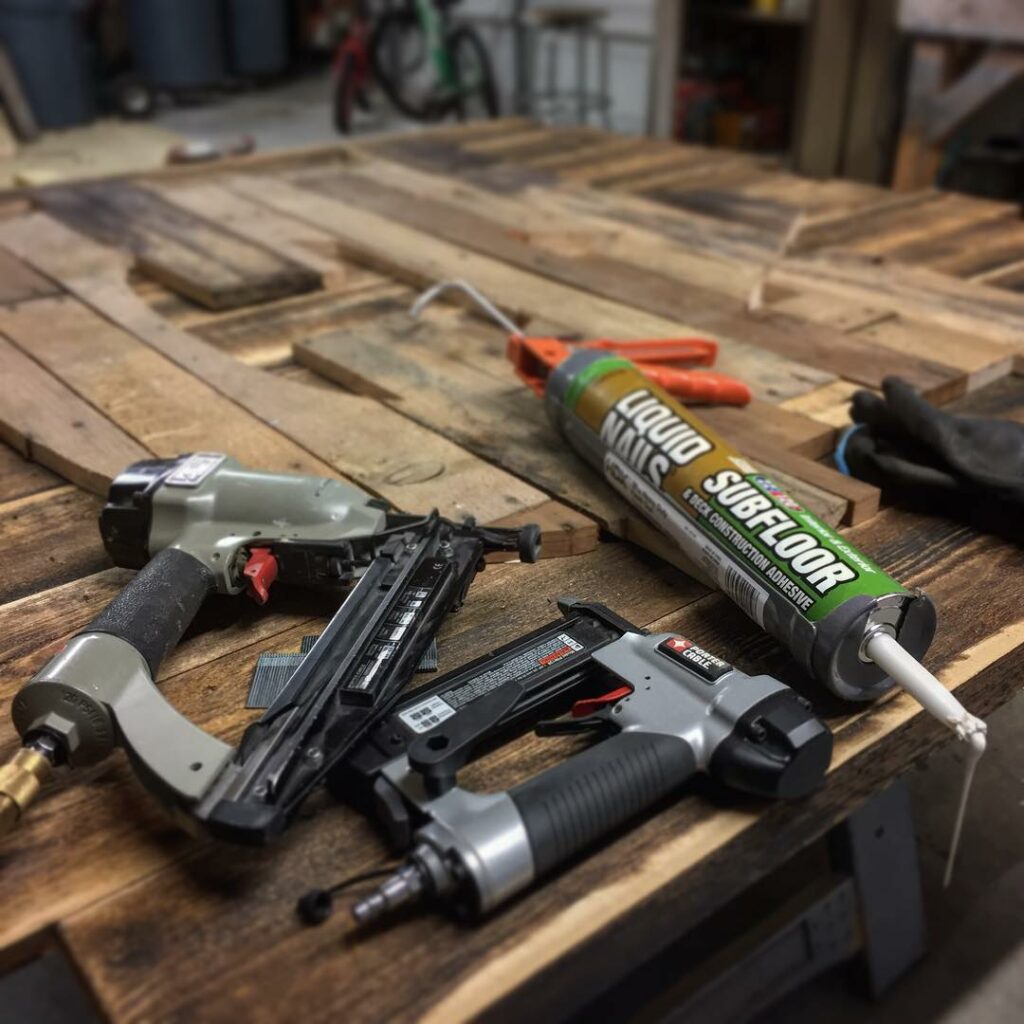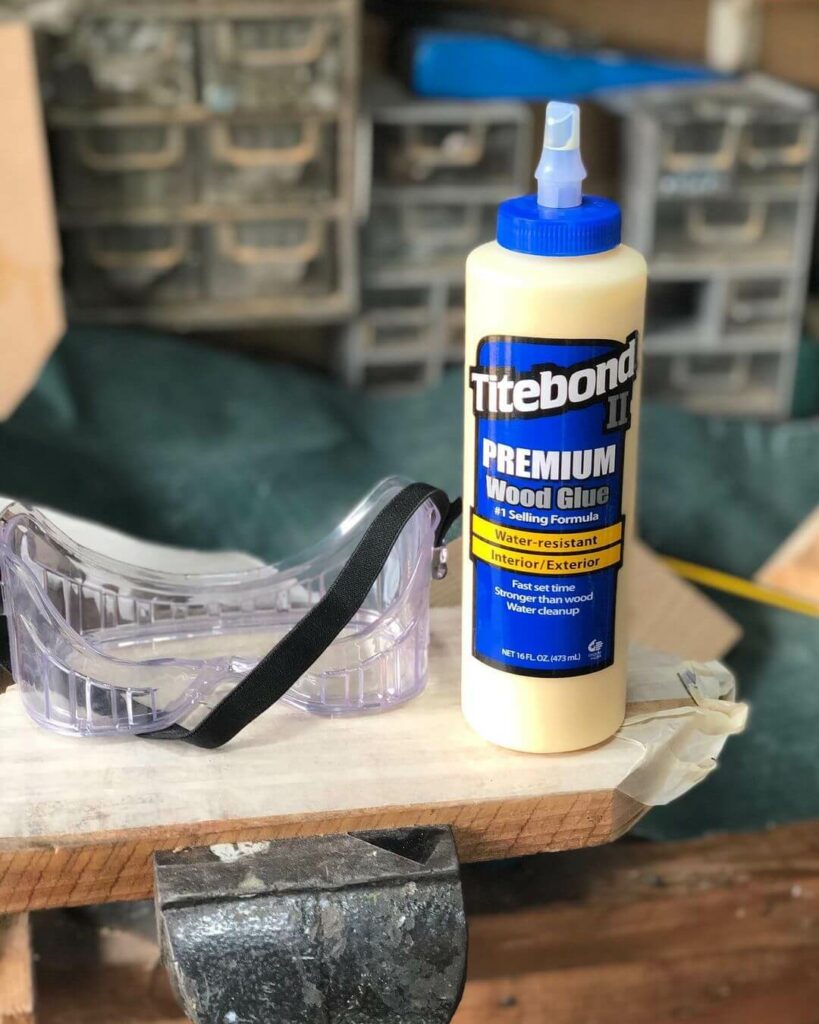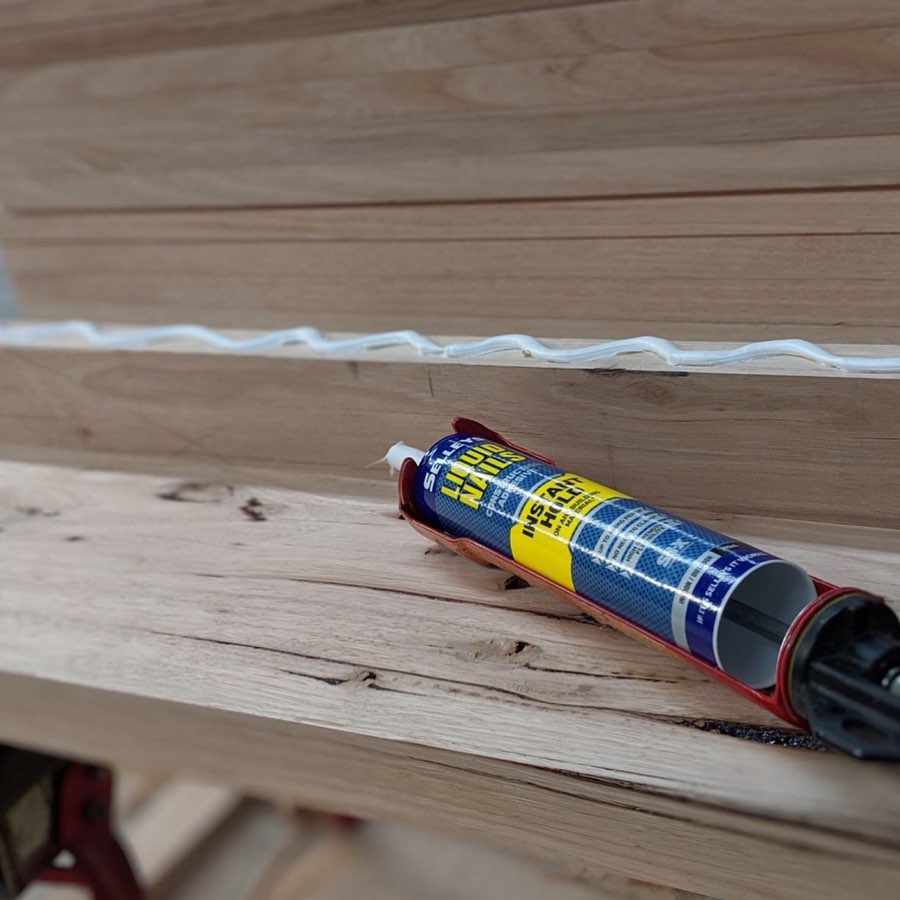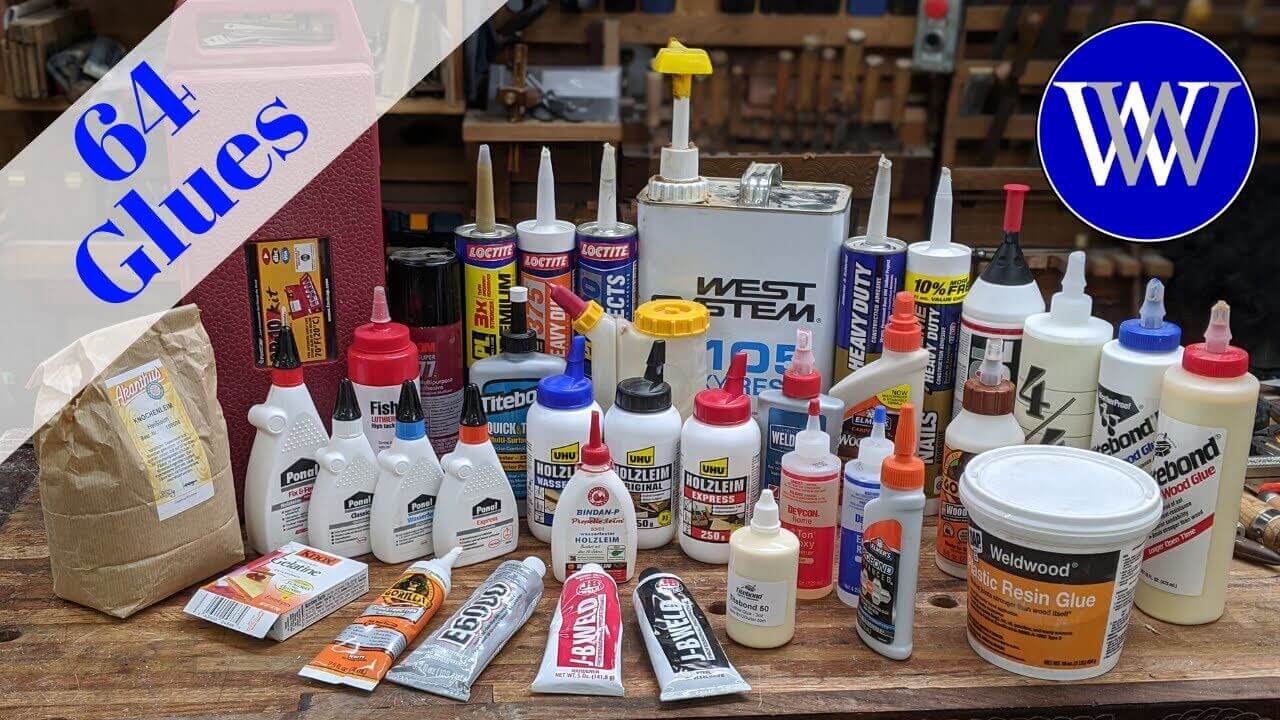Liquid Nails vs Wood Glue: Which is Better?
Are you pondering over the best adhesive choice for your next woodworking project? Liquid Nails and wood glue each offer unique benefits, but selecting the right one can be crucial for your project’s durability and appearance.
In a Nutshell:
Liquid Nails, a versatile construction adhesive, excels in bonding non-porous materials, including wood, plastic, and metal, offering robust and durable adhesion. Wood glue, on the other hand, is specifically formulated for woodworking, providing strong bonds primarily for wood-to-wood applications. Liquid Nails have a longer drying time but offer greater strength and durability, especially in non-wooden applications. Wood glue dries faster and is ideal for wood joints, being easier to clean and less toxic.
What Are the 8 Key DIFFERENCES Between Liquid Nails and Wood Glue
The primary differences between Liquid Nails and wood glue can be highlighted below.
- Bonding Surfaces: Liquid Nails are more versatile in this regard since they can work for bonding a variety of surfaces, especially non-porous materials like tiles, drywall, plastic, metal, vinyl, and many others. Wood glue works only for bonding two pieces of wood.
- Ingredients: Liquid Nails are made from latex or solvents combined with other materials. Wood glue is also made from a variety of materials, with most of them being synthetic, such as polyvinyl acetate, epoxy, and more.
- Strength: In terms of strength, you can expect Liquid Nails to serve you better than wood glue, except when you are dealing with stressed joints. If you are dealing with two pieces of wood, however, wood glue is stronger.
- Drying and Curing Time: Wood glue can dry within 30 minutes and can take up to 24 hours to cure. Liquid Nails take up to 24 hours to dry and several days to cure.
- Durability: Liquid Nails offer more durability between the surfaces after application than wood glue. However, wood glue has a longer lifespan if you simply need to store it for a while before using it.
- Toxicity: Liquid Nails can be a bit toxic if they are made from solvents, requiring precautions and safety measures to avoid contact with volatile organic compounds (VOCs). Latex-based Liquid Nails and most kinds of wood glues are not toxic.
- Cleaning: You can clean wood glue easily, not only from surfaces but also from your own skin. Soap and water can work well in this case. For Liquid Nails, you might need to use mineral spirits or petroleum jelly.
- Cost: The cost of both Liquid Nails and wood glue can depend on the kind and quantity of adhesives that you are buying. It can be better to buy these adhesives in bulk to last you for a long time.
Liquid Nails versus Wood Glue: Key Points
Liquid Nails and wood glue can help bond two or more surfaces together for a long time. You can review the following chart to understand the key distinctions and points covered above.
| Liquid Nails | Wood Glue | |
| Formulations | 39 for interior, 21 for exterior | Various |
| Surfaces | Non-porous | Wood |
| Drying Time | 24 hours | Up to 30 minutes |
| Materials | Latex/solvents | Casein, resin, polyurethane, etc. |
| Strength | High | High for wood but overall lesser than Liquid Nails |
What Are Liquid Nails?
Liquid Nails are construction adhesive products made by an industrial adhesive manufacturer. There are various heavy-duty materials that these products come in, each having different formulations that you can pick from, with interior use applications having 39 options and exterior applications having 23 options.
Liquid Nails are highly versatile adhesives that are chosen for their ability to bind non-porous materials together. This can apply to wood and a range of other surfaces, making them useful for home improvement and building projects.
Thus, you can not only bind two pieces of the same surface together but also two pieces of different surfaces.
Liquid Nails Applications
Liquid Nails have numerous applications, given that many of them are made from latex while others are made from solvents. In this sense, you can use the relevant product for different non-porous materials and surfaces, such as:
You can also attach two or more of these materials together using Liquid Nails. Additionally, if you are dealing with surfaces that carry gaps or cracks in their joints, you can use Liquid Nails to fill them up.
Liquid Nails can also work in areas with high levels of humidity, such as basements or subfloors.

Liquid Nails Pros
Liquid Nails Cons
What Is Wood Glue?
Wood glue is an adhesive that you can use specifically to join or attach two or more pieces of wood together.
Various brands and products out there produce different kinds of wood glue, each of which comes with its own properties, functions, and features.
Here is a list of some common types of wood glue that you might be able to use.
Depending on the kind of wood you are using and the type of project you are working on, you can figure out which glue would suit you the most.
Wood Glue Applications
There are several uses for which you can use wood glue in your projects, such as combining wood with another piece of wood or porous material.
This can apply to repairs around the house, building or constructing a piece of furniture, working on a decorative piece, and many others.
In particular, you can use wood glue well if you do not wish to deal with harmful fumes and the hassle of cleaning up.

Wood Glue Pros
Wood Glue Cons
How Much Weight Can Liquid Nails Hold?
Liquid Nails can manage to hold a weight of up to 1,700 pounds per square inch (psi). All Liquid Nails products tend to withstand different weight levels depending on the particular kind of surface they are meant to work with.
In general, Liquid Nails are incapable of holding too much weight, making them unsuitable for application on joints that are likely to be stressed during regular usage. This can refer to furniture as well as joists and other such projects.
How Much Weight Can Wood Glue Hold?
Wood glue can hold a good amount of weight. Wood glue can actually hold as much as 4,000 psi. Thus, after you carry out the bonding between two pieces of wood, they can withstand quite a bit of pressure, even when the joints happen to be stressed.
For this reason, it typically makes more sense to use wood glue in wooden furniture, joists, subfloor, and other such applications. However, you should note that you will probably need to use some other joining tools too, instead of relying only on wood glue.
Which One Delivers a Stronger Bond?
When it comes to delivering a stronger bond, Liquid Nails usually emerge as the winner. This is because they are designed for heavy-duty work, including construction, making them extremely sturdy and strong even after some time passes.
Even if you try to force the two non-porous surfaces apart, you will find it difficult to do so. However, Liquid Nails do not provide the same kind of strength on raw wood.
Wood glue tends to deliver a slightly weaker bond and usually requires some additional support to truly hold the surfaces together. It also weakens over time.
Conclusion: Liquid Nails vs Wood Glue
Based on what we have seen, it is better to use Liquid Nails if you are looking for versatility and stronger bonds between your non-porous materials.
Key Takeaways:
Key point to remember, wood glue can be the better option if you only need to join two pieces of untreated wood. So for your home DIY woodworking project, wood glue is your best bet.



